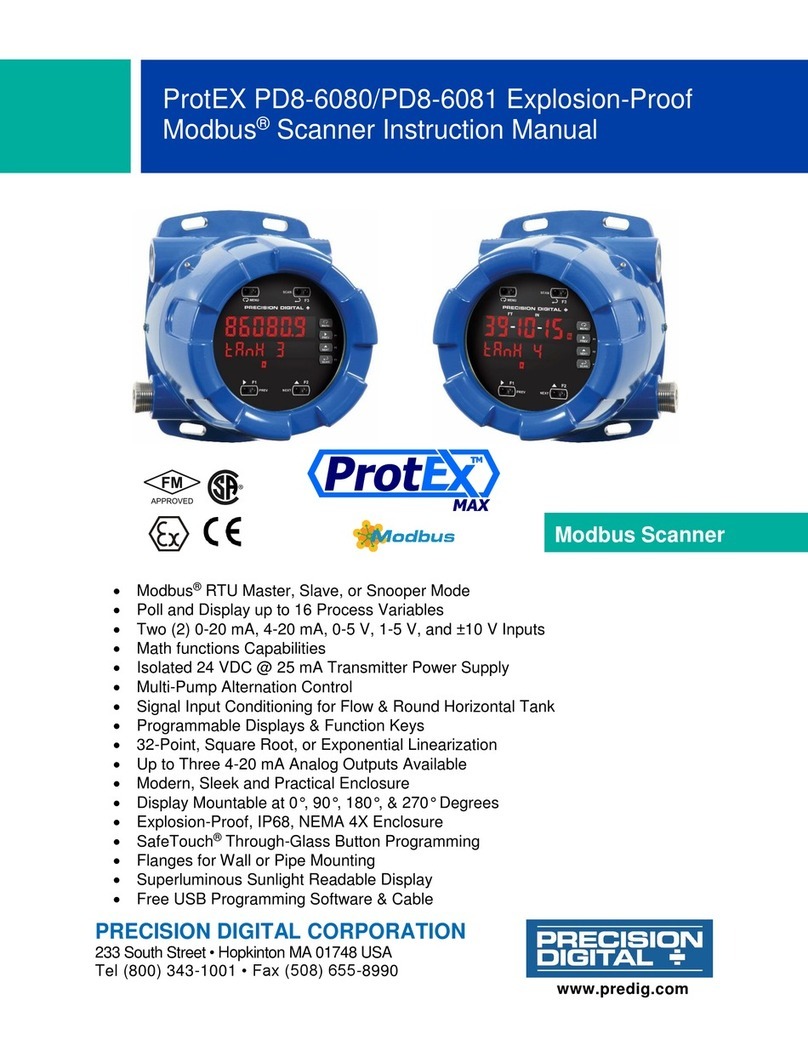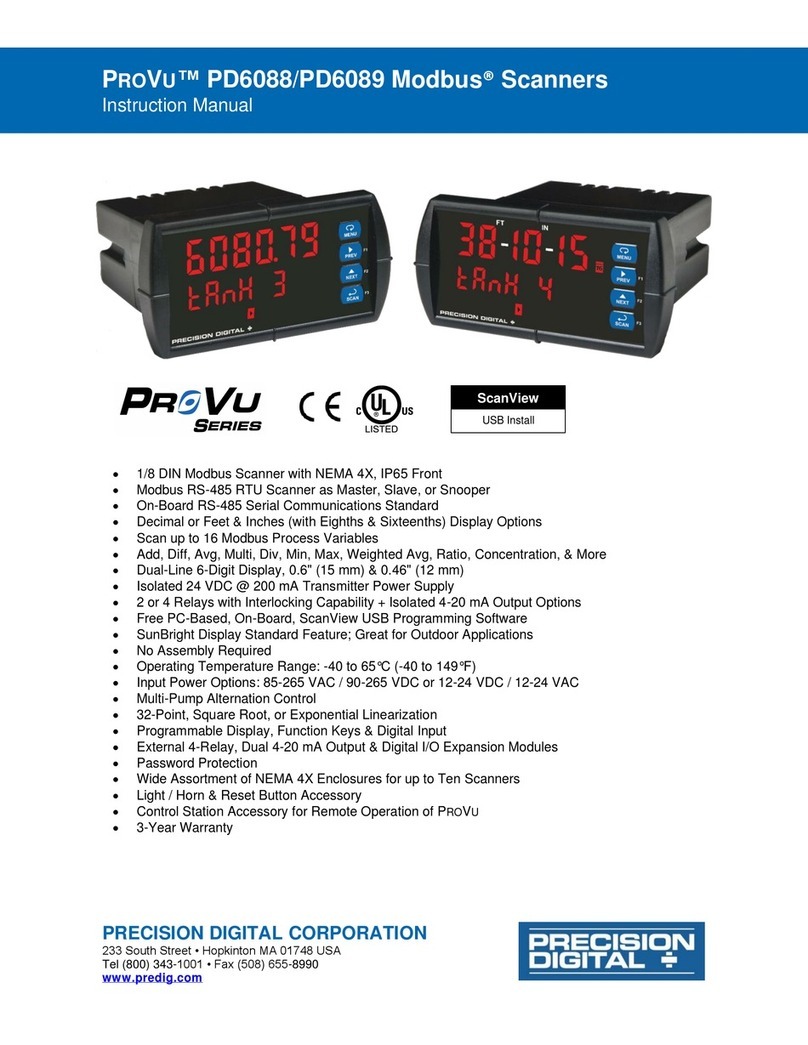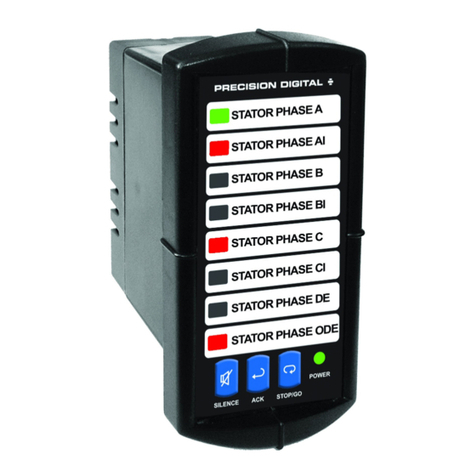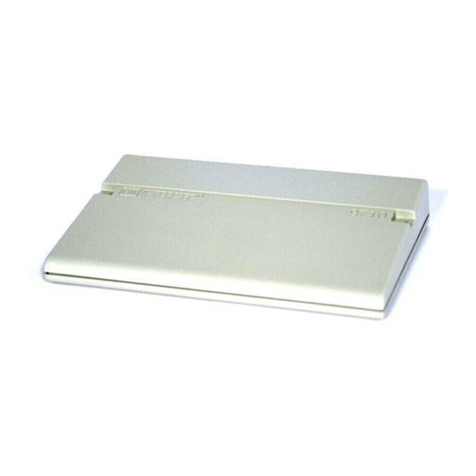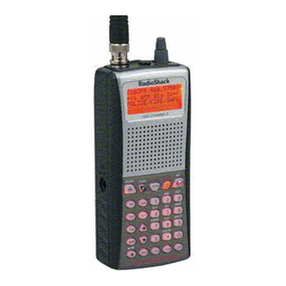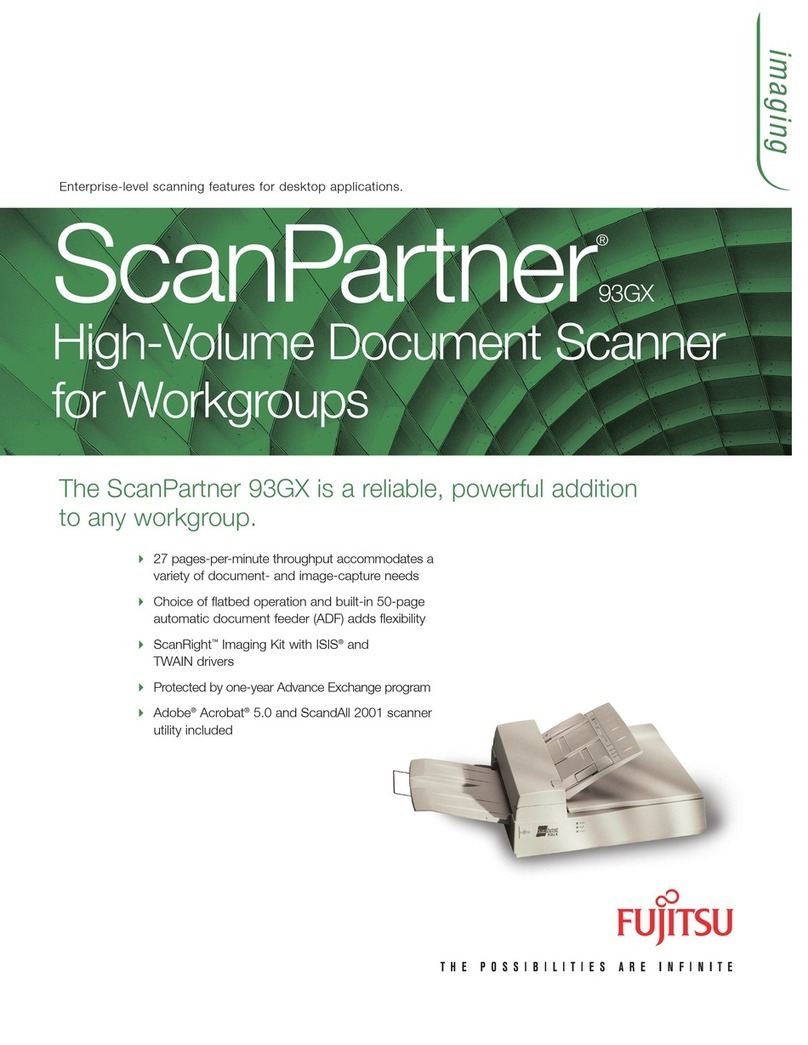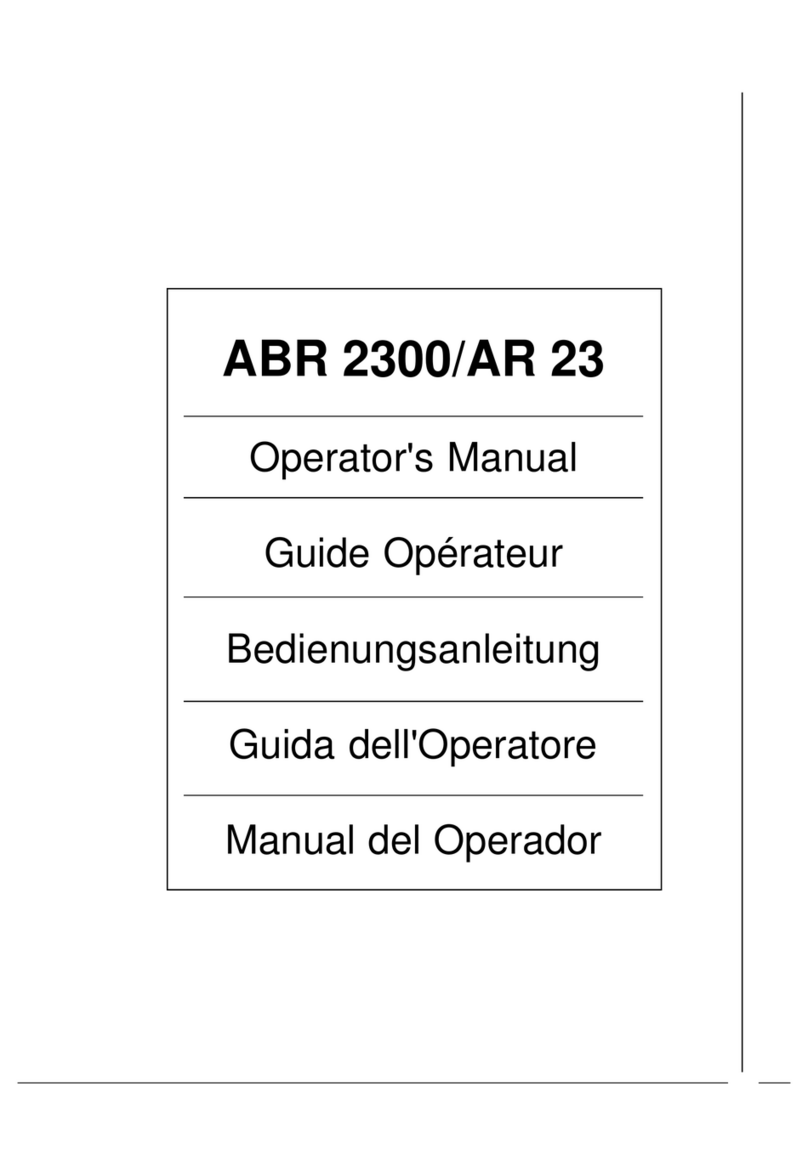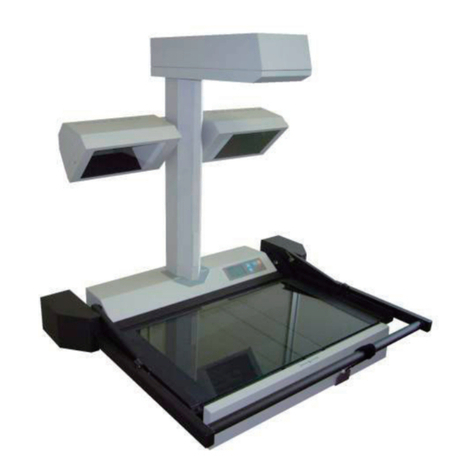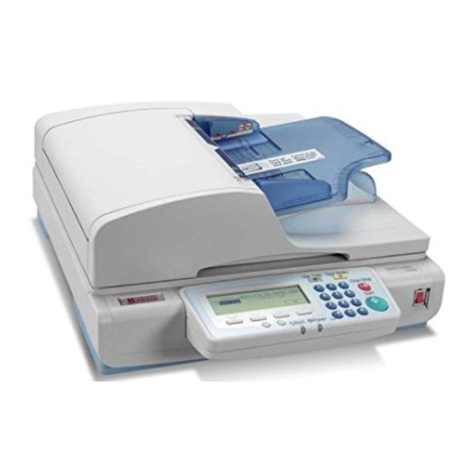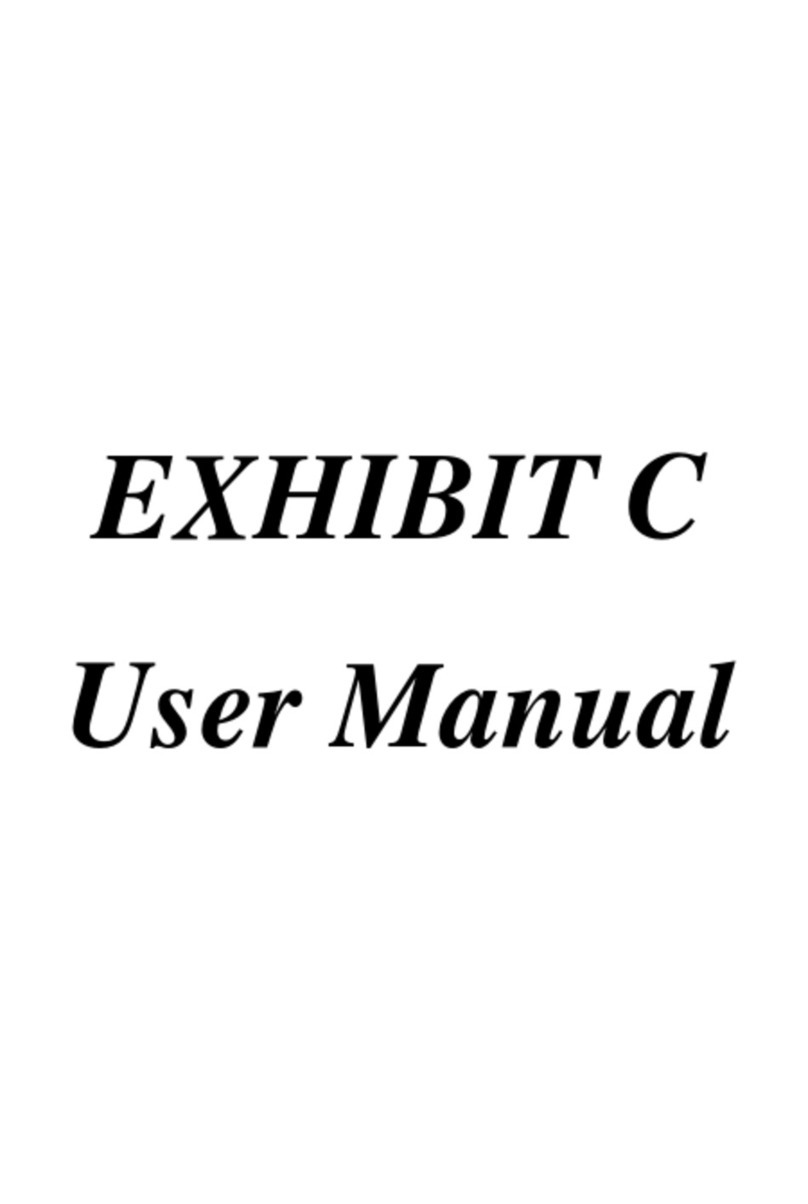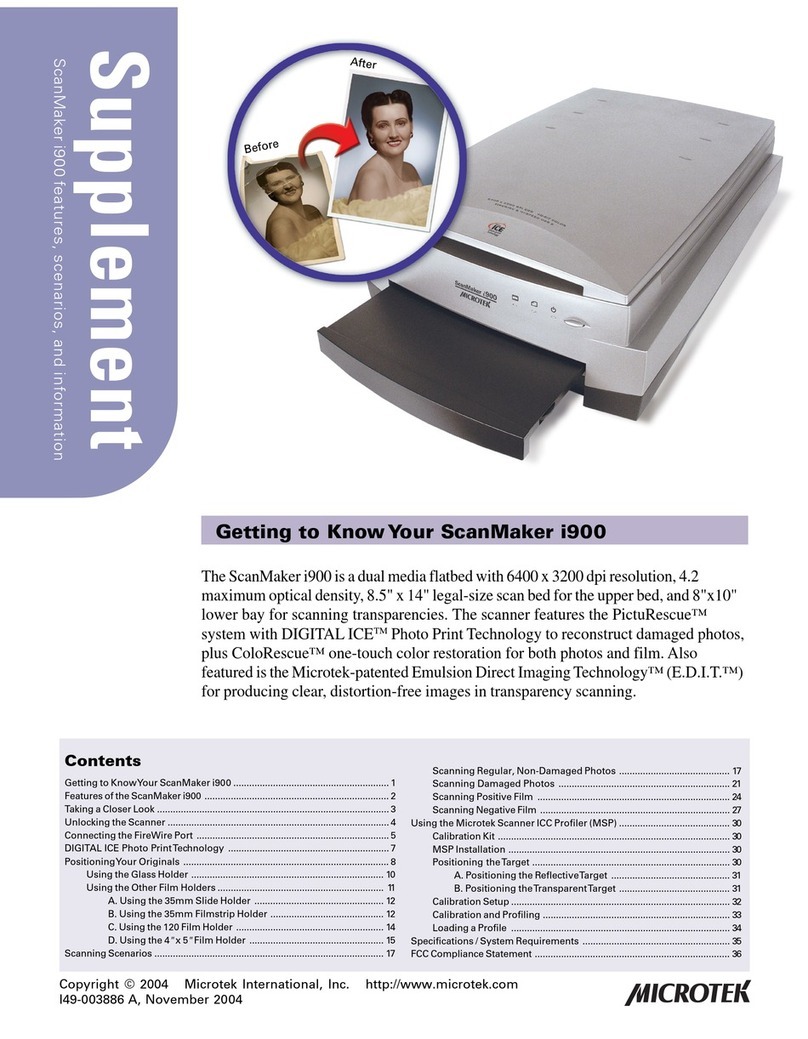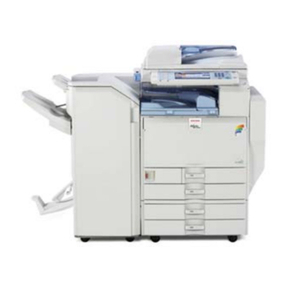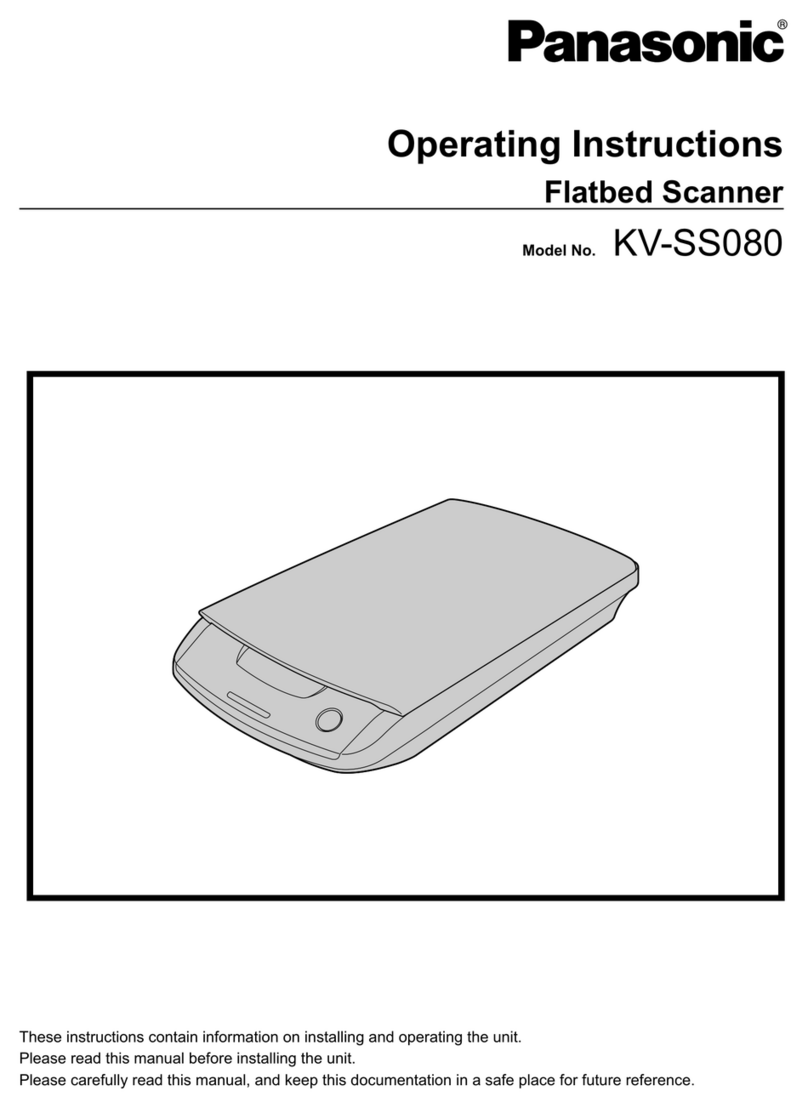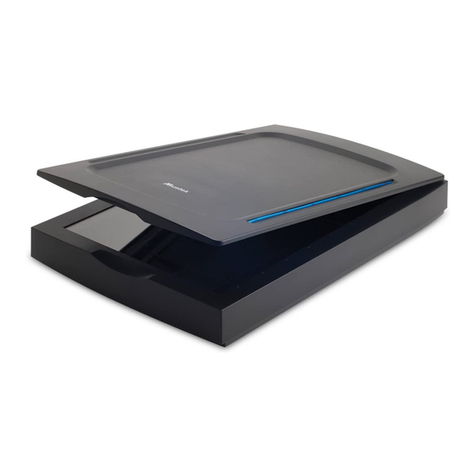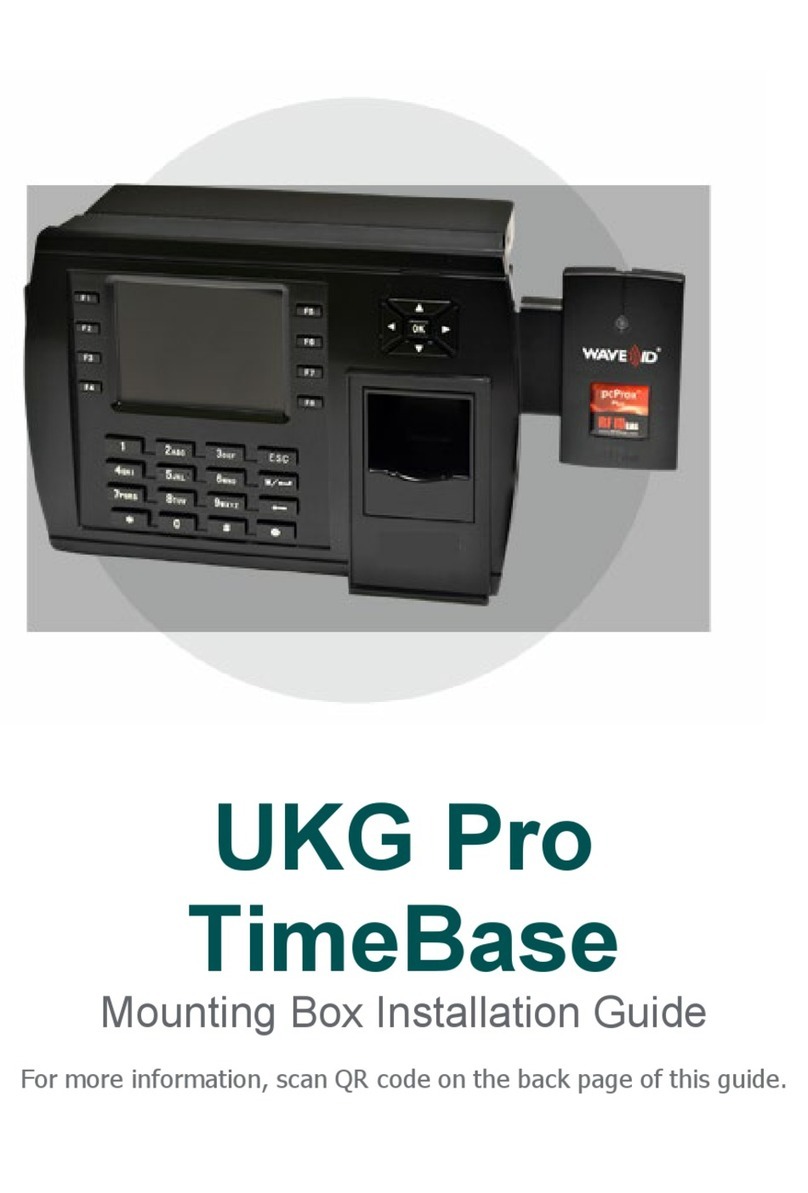PRECISION DIGITAL ProVu Series User manual

PROVU PD6080/PD6081 Modbus® Scanner
Instruction Manual
PRECISION DIGITAL CORPORATION
233 South Street • Hopkinton MA 01748 USA
Tel (800) 343-1001 • Fax (508) 655-8990
www.predig.com
Modbus Scanner
Modbus® RTU Master, Slave, or Snooper Mode
Poll and Display up to 16 Process Variables
Two (2) 0-20 mA, 4-20 mA, 0-5 V, 1-5 V, and ±10 V Inputs
Math functions Capabilities
Isolated 24 VDC @ 200 mA Transmitter Power Supply
Multi-Pump Alternation Control
Signal Input Conditioning for Flow & Round Horizontal Tank
Programmable Displays & Function Keys
32-Point, Square Root, or Exponential Linearization
Up to Three 4-20 mA Analog Outputs Available
Dual-Line Display
NEMA 4X and IP65 Rated Front Panel
UL Listed & CE Marked
Display Features 0.6" & 0.46" Digits
Six Full Digits on Each Line
Superluminous Sunlight Readable Display
Free USB Programming Software & Cable
P
R
V
U
S
ERIES
®

PROVU PD6080/PD6081 Modbus® Scanner Meter Instruction Manual
2
Disclaimer
The information contained in this document is subject to change without notice.
Precision Digital Corporation makes no representations or warranties with respect to the
contents hereof; and specifically disclaim any implied warranties of merchantability or
fitness for a particular purpose.
CAUTION
Read complete instructions prior to installation
and operation of the scanner.
WARNING!
Risk of electric shock or personal injury. Hazardous
voltages exist within enclosure. Installation and service
should be performed only by trained service personnel.
WARNING!
This product is not recommended for life support
applications or applications where malfunctioning could
result in personal injury or property loss. Anyone using
this product for such applications does so at his/her
own risk. Precision Digital Corporation shall not be held
liable for damages resulting from such improper use.
Limited Warranty
Precision Digital Corporation warrants this product against defects in material or
workmanship for the specified period under “Specifications” from the date of shipment
from the factory. Precision Digital’s liability under this limited warranty shall not exceed
the purchase value, repair, or replacement of the defective unit.
Registered Trademarks
PROVU® is a registered trademark of Precision Digital Corporation. Modbus® is a
Registered Trademark of Schneider Automation Inc. All other trademarks mentioned in
this document are the property of their respective owners.
© 2017 Precision Digital Corporation. All rights reserved.
www.predig.com
!

PROVU PD6080/PD6081 Modbus® Scanner Instruction Manual
3
Table of Contents
Table of Contents ----------------------------------------- 3
Table of Figures ------------------------------------------- 4
Introduction ------------------------------------------------- 5
Ordering Information ------------------------------------ 6
Specifications ---------------------------------------------- 7
Operating Modes ---------------------------------------------- 7
Master & Snooper Settings --------------------------------- 7
PV Settings ------------------------------------------------------ 7
Display Settings ------------------------------------------------ 7
Math Functions ------------------------------------------------- 8
Serial Communications -------------------------------------- 8
General ------------------------------------------------------------ 8
Relays ------------------------------------------------------------- 9
Isolated 4-20 mA Transmitter Output ------------------- 9
Dual Process Input -------------------------------------------- 9
MeterView Pro -------------------------------------------------- 9
Compliance Information ------------------------------ 10
Safety ------------------------------------------------------------ 10
Electromagnetic Compatibility -------------------------- 10
Safety Information -------------------------------------- 11
Installation ------------------------------------------------ 11
Unpacking ------------------------------------------------------ 11
Panel Mounting ----------------------------------------------- 11
Mounting Dimensions ------------------------------------ 12
Transmitter Supply Voltage Selection (P+, P-) ---- 13
Connections --------------------------------------------------- 1 4
Connectors Labeling -------------------------------------- 14
Power Connections --------------------------------------- 14
Serial Communications Connection ------------------ 15
Serial Communications Connections Table --------- 16
F4 Digital Input Connections ---------------------------- 16
Relay Connections ---------------------------------------- 17
Switching Inductive Loads ------------------------------- 17
4-20 mA Output Connections --------------------------- 18
Analog Output Transmitter Power Supply ----------- 18
External Relay, Analog Output, & Digital I/O
Connections ------------------------------------------------- 18
Interlock Relay Feature ---------------------------------- 18
Analog Input Signal Connections ---------------------- 19
Setup and Programming ------------------------------ 20
Overview -------------------------------------------------------- 20
Front Panel Buttons and Status LED Indicators -- 20
Display Functions & Messages ------------------------- 21
ScanView Software ----------------------------------------- 24
ScanView Installation ------------------------------------- 24
Menu Navigation Tip ---------------------------------------- 25
Setting Numeric Values ----------------------------------- 25
Main Menu ----------------------------------------------------- 2 5
Serial Communications (serial) ----------------------- 26
Scanner Mode Selection ---------------------------------- 27
Operating Modes (nmode) --------------------------------- 27
How to Enable Process Variables (PVs) ------------- 27
Master Mode (nmastr) ----------------------------------- 28
Snooper Mode (Snoopr) ----------------------------------- 29
How to Select 5 or 6-Digit Registers ------------------ 30
Slave Mode (Slave) -------------------------------------- 30
Setting Up the Scanner (setup) ------------------------- 31
Setting Up the Process Variables (PVs) (pv setup)
----------------------------------------------------------------- 32
Setting the Display Decimal Point (disp.dp) -------- 32
Setting the Float Decimal Point (Flot..dp) ----------- 32
Scaling the PV Display Values (sCale) -------------- 33
Scale Menu ------------------------------------------------- 33
Setting Up the Displays (dsplay setup) ------------- 34
Display Line 1 Parameters (Line 1 dsplay) ------ 34
Display Line 2 Parameters (Line 2 dsplay) ------ 34
Display Intensity (d-IntY) ------------------------------- 34
Display Line 1 Menu (Line 1 dsplay) -------------- 35
Display Line 2 Menu (Line 2 dsplay) -------------- 36
Setting the Tags (tAg) & Units (units) -------------- 37
Application Example 1 ----------------------------------- 37
Application Example 2 ----------------------------------- 40
Setting the Relay Operation (relay) ------------------ 41
Relay Setup Menu (relay setup) ------------------- 41
Setting the Relay Action (act 1) ---------------------- 42
Programming Set (set) & Reset (rst) Points ------ 42
Setting Fail-Safe Operation (failsf) ---------------- 42
Programming Time Delay (delay) -------------------- 42
Relay Action for Communications Break (break) - 43
Relay Action for Loss of 4-20 mA Input (Loop Break)
----------------------------------------------------------------- 43
Relay and Alarm Operation Diagrams ---------------- 43
High Alarm Operation (Set > Reset) ------------------ 43
Low Alarm Operation (Set < Reset) ------------------ 43
High Alarm with Fail-Safe Operation (Set > Reset)
----------------------------------------------------------------- 44
Low Alarm with Fail-Safe Operation (Set < Reset) 44
Pump Alternation Control Operation ------------------ 44
Relay Sampling Operation ------------------------------ 45
Relay Operation After Communications Break ---- 45
Signal Loss or Loop Break Relay Operation ------- 46
Time Delay Operation ------------------------------------ 46
Relay Operation Details ----------------------------------- 47
Overview ----------------------------------------------------- 47
Relays Auto Initialization -------------------------------- 47
Fail-Safe Operation (failsf) -------------------------- 47
Front Panel LEDs ----------------------------------------- 47
Latching and Non-Latching Relay Operation ------- 48
Non-Latching Relay (Auto) ----------------------------- 48
Non-Latching Relay (A-man) ------------------------- 48
Latching Relay (LatcH) ---------------------------------- 48
Latching Relay (Lt-Clr) --------------------------------- 48
Acknowledging Relays ----------------------------------- 49
Pump Alternation Control Applications (Altern) -- 49
Setting Up the Interlock Relay (Force On) Feature 50
Scaling the 4-20 mA Analog Output (Aout) --------- 51
Setting Up the Password (pass) ------------------------ 52
Protecting or Locking the Scanner -------------------- 52
Making Changes to a Password Protected Scanner
----------------------------------------------------------------- 52
Disabling Password Protection ------------------------ 52
Advanced Features Menu -------------------------------- 53
Advanced Menu Navigation Tips: ---------------------- 53
Advanced Features Menu & Display Messages --- 54
Scan Function (SCan) ------------------------------------ 56
Control Menu (Contrl) ---------------------------------- 56
Noise Filter (filter) ------------------------------------- 57
Noise Filter Bypass (bypass) --------------------------- 57

PROVU PD6080/PD6081 Modbus® Scanner Meter Instruction Manual
4
Rounding Feature (round) ------------------------------ 57
Select Menu (SELect) ------------------------------------ 57
Low-Flow Cutoff (CutofF) ------------------------------- 65
Analog Output Source Programming (aoutpr) ---- 66
User Menu (user) ----------------------------------------- 67
Digital Input Menu (dI 1) -------------------------------- 68
Digital Output Menu (dO 1) ----------------------------- 68
Reset Menu (reset) -------------------------------------- 68
4-20 mA Output Calibration ----------------------------- 69
Input Calibration (ICAL) ---------------------------------- 70
Recalibrating the Analog Input Channels (Ch-A &
Ch-B) --------------------------------------------------------- 7 0
Troubleshooting ----------------------------------------- 71
Diagnostics Menu (diag) ---------------------------------- 72
Determining Software Version ------------------------- 72
Reset Scanner to Factory Defaults ------------------- 72
Testing the Display LEDs ------------------------------- 72
Scanner Operation -------------------------------------- 73
Front Panel Buttons Operation ------------------------- 73
Function Keys Operation --------------------------------- 73
F4 Operation -------------------------------------------------- 73
Maximum/Minimum Readings --------------------------- 73
Factory Defaults & User Settings ---------------------- 74
EU Declaration of Conformity ----------------------- 77
Table of Figures
Figure 1. 1/8 DIN Panel Cutout Dimensions & Panel
Mounting Details ------------------------------------------ 11
Figure 2. Scanner Dimensions - Side View ------------- 12
Figure 3. Scanner Dimensions - Top View -------------- 12
Figure 4. Transmitter Supply Voltage Selection ------ 13
Figure 5. Connector Labeling for Fully Loaded
PD6080/6081 ----------------------------------------------- 14
Figure 6. Power Connections ------------------------------- 14
Figure 7. Serial Communications Connections ------- 15
Figure 8. Three-Wire RS485 Connection ---------------- 16
Figure 9. F4 Digital Input Connections------------------- 16
Figure 10. Relay Connections ------------------------------ 17
Figure 11. AC and DC Loads Protection ---------------- 17
Figure 12. Low Voltage DC Loads Protection --------- 17
Figure 13. 4-20 mA Output Connections ---------------- 18
Figure 14. Interlock Connections -------------------------- 18
Figure 15. Transmitters Powered by Internal Supply 19
Figure 16. Transmitter Powered by Ext. Supply or
Self-Powered ----------------------------------------------- 19
Figure 17. Voltage Input Connections ------------------- 19
Figure 18. Acknowledge Relays with F4 Function Key
------------------------------------------------------------------ 49
Figure 19. Acknowledge Relays with Digital Input -- 49

PROVU PD6080/PD6081 Modbus® Scanner Instruction Manual
5
Introduction
The PROVU® PD6080/6081 Super Snooper Modbus® Scanner is a multi-purpose, easy-to-use
digital scanner that can be programmed as a Modbus RTU Master, Slave, or Snooper. It is
capable of scanning up to 16 variables generated by any Modbus device, which makes it ideal
for tank level monitoring and control. Its superluminous LED digits make it easily readable in
smoke, dust, fog, and, with the optional SunBright® display, even direct sunlight. The PD6080
displays in decimal format, while the PD6081 displays in Feet & Inches.
As a master, the PD6080/6081 reads up to 16 slave devices, scales the data from each,
displays the result, and operates the internal relays and 4-20 mA output. The PD6080/6081 in
Master mode is capable of polling up to 16 process variables (PVs); it displays all the enabled
PVs in sequence, at a user programmable scan rate; it also allows other PD6080/6081s in
Snooper mode to read any of the variables being polled by the master. As a snooper, the
PD6080/6081 listens to the Modbus traffic and picks up a specific register or registers being
polled by a master device from a specific slave device and processes the data being read. As a
slave, it is controlled by a master device. The data sent to it by the master is scaled, displayed,
and used to operate the relays and 4-20 mA output.
The PD6080/6081 Super Snooper is housed in a 1/8 DIN panel scanner enclosure that features
a NEMA 4X front panel. Data is displayed on an adjustable intensity, dual-line, six-digit display.
The upper display is a 0.6 inch, seven-segment LED display, while the lower display digit height
is 0.46 inches. The Super Snooper can be powered from 85-265 VAC or 12-36 VDC. It is
available with up to 4 internal relays and is available with 4 additional relays and up to 8 digital
inputs/outputs, as well as a dual 4-20 mA output expansion module, as options.
The PD6080/6081 comes equipped with dual analog input channels (4-20 mA and/or 0-10 VDC)
for use in Master Mode. These can be assigned to mA or volts by mapping a PV to the internal
scanner addresses 256-259, depending on the desired function.
Various math functions may be applied to the Modbus and analog inputs including addition,
difference, absolute difference, average, weighted average, multiplication, division, minimum,
maximum, draw, ratio, and concentration. This is in addition to the signal input conditioning
functions (linear, square root, programmable exponent, or round horizontal tank calculations).
The displays, relays, and the analog outputs may be assigned to PVs or to math channels C1,
C2, C3, or C4. The digital inputs/outputs can be custom-programmed for specific operations. A
digital input (F4) is standard.
Free ScanView software allows a Super Snooper Modbus Scanner to be accessed with a
computer. Configure multiple scanners, conveniently monitor critical information, and Datalog
right from a PC with ease, further increasing plant efficiency.

PROVU PD6080/PD6081 Modbus® Scanner Meter Instruction Manual
6
Ordering Information
SunBright Decimal Display Models
PROVU's SunBright display models have an extraordinarily bright LED display. They are perfect for
applications where the scanner is in direct sunlight or in applications where visibility may be impaired by
smoke, fog, dust, or distance.
85-265 VAC Power Model 12-24 VDC Power Model Options Installed
PD6080-6H0 PD6080-7H0 No options
PD6080-6H2 PD6080-7H2 2 relays (PD1102*)
PD6080-6H3 PD6080-7H3 4-20 mA output (PD1103*)
PD6080-6H4 PD6080-7H4 4 relays (PD1104*)
PD6080-6H5 PD6080-7H5 2 relays & 4-20 mA output (PD1105*)
PD6080-6H7 PD6080-7H7 4 relays & 4-20 mA output (PD1107*)
*Model number for replacement option card.
SunBright Feet & Inches Display Models
PD6081-6H0 PD6081-7H0 No options
PD6081-6H2 PD6081-7H2 2 relays (PD1102*)
PD6081-6H3 PD6081-7H3 4-20 mA output (PD1103*)
PD6081-6H4 PD6081-7H4 4 relays (PD1104*)
PD6081-6H5 PD6081-7H5 2 relays & 4-20 mA output (PD1105*)
PD6081-6H7 PD6081-7H7 4 relays & 4-20 mA output (PD1107*)
*Model number for replacement option card.
Accessories
Model Description
PDA1002 DIN rail mounting kit for two expansion modules
PDA1004 4 SPST (Form A) relays
PDA1011 Dual 4-20 mA expansion module
PDA1044 4 digital inputs & 4 digital outputs (2 may be connected)
PDA1485 RS-485 serial adapter - (Included with PD6080 and PD6081)
PDA7485-I RS-232 to RS-422/485 isolated converter
PDA7485-N RS-232 to RS-422/485 non-isolated converter
PDA8485-I USB to RS-422/485 isolated converter
PDA8485-N USB to RS-422/485 non-isolated converter
PDX6901 Suppressor (snubber): 0.01 µF/470
, 250 VAC

PROVU PD6080/PD6081 Modbus® Scanner Instruction Manual
7
Specifications
Except where noted all specifications apply to operation at +25°C.
Operating Modes
Master Processes data read from Modbus RTU
slave devices. It polls up to 16 process
variables from 1 to 16 slave devices. The
Master is capable of scanning the selected
PVs, scaling the data, triggering relays,
performing math operations, and driving the
analog outputs.
Snooper Listens to the Modbus traffic and picks up a
specific register or registers being polled by
a master device from a specific slave device
and processes the data being read. The
Snooper mode handles the data the same
way as the Master.
Slave Processes data sent to it from a Modbus
RTU master device.
Note: The relays and the 4-20 mA outputs are functional in
all modes.
Master & Snooper Settings
PV Number PV1–PV16 Enable or disable the process
variables to be polled by the Master.
Slave Id Assign the slave ID or address (1-247, 256-
259 for mA or volts inputs) containing the
process variables to be displayed by the
selected PV.
Function
Code
Select which Modbus function code (03, 04, or 65)
to use in reading the slave device.
Register
Number
5 digit: 30001-39999, 40001-49999, or 1-
65,536
6 digit: 300001-365536 or 400001-465536
(Function Code 65 N/A here)
Specifies which register(s) to read in the
slave device. Range is dependent on
Function Code selection (65, 04, or 03) and
digits selection (5 or 6).
Data Type Select the data format that the slave device
uses. Select between Short integer (2 byte),
Long integer (4 byte), or floating point (4
byte), Signed or Unsigned (integer only) and
byte order: 1234, 4321, 2143, or 3412 (big-
endian vs.
little-endian, or swapped).
Poll Time 1.0 to 99.9 sec. Time between read-
commands (Master mode).
Slave
Response
Timeout
0.0 to 99.9 seconds: Time allowed for the
slave to respond before the scanner
generates a communication break condition.
The master polls the slave 3 times before
starting the response timeout timer.
Slave/Snooper mode: Time the scanner will
wait for new data before going into break
condition.
Slave mode: Programming 0 disables the
timeout; the last value received will be
displayed indefinitely.
Communicati
on Break
Displays “brEAK” after the Master has polled
the slave device 3 times and the response
timeout has elapsed. The Snooper and
Slave modes go into break condition after no
new data is received within the response
timeout window. Relays can be programmed
to go on, off, or ignore the break condition.
The analog outputs can be setup to
generate a fixed mA current when a break
condition is detected.
PV Settings
Tag & Units 6-character, independent tag and units for
each PV and math channel
PV Format PD6080 default: Decimal format
PD6081 default: FT & IN, 1/8th or 1/16th;
decimal format may be selected for bottom
display indication.
Display
Decimal
Point
Up to five decimal places or none: d . ddddd,
dd . dddd, ddd . ddd, dddd . dd, ddddd . d, or
dddddd
Float
Decimal
Point
Select the number of decimals to use for the
floating point data expected from the slave or
master device (this is independent from the display
decimal point selection).
Pv & Math
Scaling
All PVs and math channels may be scaled
to represent the input data in any
engineering unit.
Example: Level transmitter = 999.999
inches; to display in Ft-In-1/16th scale input
2 to display 83 Ft – 4 In – 0/16th.
Display Settings
Scan Mode Automatic: 1.0 to 99.9 sec
Manual: Front panel or digital inputs
Go on alarm: Continues scanning after an
alarm is detected
Stop on alarm: Goes to the alarmed PV and
stops scanning; press Scan to resume
scanning.
Display
Scan Rate
Master/Snooper: 1 PV/second to 1 PV every
99.9 seconds
Slave: Dependent on master device (e.g.
PLC)
Note: The display scan rate is independent
of the poll time.
Display
Assignment
Display line 1 may be assigned to PV
(process values), Ch-C (math channel), PV
& units, tag & PV, tag-PV-units, C & units,
tag-C-unit, Set point 1-8, max/min PV,
max/min C.
Line 2 may be assigned to all of the above,
tag, tag & units, or off.
The tag and units are displayed alternately
for 2 sec max, when selected.
Different tags & PVs may be selected to
display on line 1 & 2 at the same time.

PROVU PD6080/PD6081 Modbus® Scanner Meter Instruction Manual
8
Math Functions
Name Math Operation (Examples)
(P = Adder, F = Factor)
Setting
Addition (PV1+PV2+P)*F Sunm
Difference (PV1-PV2+P)*F diF
Absolute
difference
((Abs(PV1- PV2)+P)*F diFAbS
Average (((PV1+PV2)/2)+P)*F AvG
Multiplication ((PV1*PV2)+P)*F Nmulti
Division ((PV1/PV2)+P)*F divide
Max PV Max value of all selected PVs Hi-pv
Min PV Min value of all selected PVs Lo-pv
Draw ((PV1/PV2)-1)*F drAuw
Weighted
average
((PV2-PV1)*F)+PV1 uwavg
Ratio (PV1/PV2)*F Ratio
Concentration (PV1/(PV1+PV2))*F Concen
Math 2 Math on other math channels Nmath2
Programmable
Constants
Constant P (Adder): -99.999 to 999.999,
default: 0.000
Constant F (Factor): 0.001 to 999.999,
default: 1.000
Serial Communications
Scanner Id 1 – 247 (Scanner Modbus address)
Baud Rate 300 – 19,200 bps
Transmit
Time Delay
Programmable 0 to 4999 ms
This is the time the scanner will wait for a
slave to respond before sending another
request on the bus. This value should be
greater than 100 ms to avoid collisions on
the bus.
Data 8 bits (1 start bit, 1 or 2 stop bits)
Parity Even, Odd, or None with 1 or 2 stop bits
Byte-To-Byte
Timeout
0.01 – 2.54 second
Turn Around
Delay
Less than 2 ms (fixed)
Note: Refer to the PROVU®Scanner Modbus Register
Tables located at www.predig.com.
General
Input/output Modbus RTU over RS-485, Two analog
inputs (4-20 mA, 10 V)
Display Upper display: 0.60" (15 mm) high, red
LEDs
Lower display: 0.46" (12 mm) high, red
LEDs
6 digits each (-99999 to 999999), with lead
zero blanking
Display
Intensity
Eight user selectable intensity levels
Overrange Values greater than 999999 cause the
display to flash 999999
Underrange Values less than -99999 cause the
display to flash -99999
Programming
Methods
Four front panel buttons, digital inputs, PC
and ScanView software, or Modbus
registers.
Max/Min
Display
Max/min readings are stored until reset by
the user or when power to the scanner is
turned off. User can reset by front panel
pushbuttons, digital input, or via Modbus
registers.
Password Three programmable passwords restrict
modification of programmed settings.
Pass 1: Allows use of function keys and
digital inputs
Pass 2: Allows use of function keys, digital
inputs and editing set/reset points
Pass 3: Restricts all programming, function
keys, and digital inputs.
F4 Digital
Input Contacts
50k ohm pull-up to 3.3 VDC.
Connect normally open contacts across F4
to COM.
F4 Digital
Input
Logic Levels
Logic High: 3 to 5 VDC
Logic Low: 0 to 1.25 VDC
Non-Volatile
Memory
All programmed settings are stored in non-
volatile memory for a minimum of ten
years, with or without power.
Power
Options
85-265 VAC 50/60 Hz, 90-265 VDC, 20 W
max or 12-24 VDC 10%, 15 W max
Powered over USB for configuration only.
Fuse Required external fuse: UL Recognized, 5
A max, slow blow; up to 6 scanners may
share one 5 A fuse
Isolated
Transmitter
Power Supply
Terminals P+ & P- : 24 VDC 10%.
Selectable for 24, 10, or 5 VDC supply
(internal jumper J4).
85-265 VAC models rated @ 200 mA max,
12-24 VDC powered models rated @ 100 mA
max, 5 or 10 VDC supply rated @ 50 mA max.
Isolation 4 kV input/output-to-power line. 500 V
input-to-output or output-to-P+ supply
Overvoltage
Category
Installation Overvoltage Category II: Local
level with smaller transient overvoltages
than Installation Overvoltage Category III.
Environmental Operating temperature range: -40 to 65°C
Storage temperature range: -40 to 85°C
Relative humidity: 0 to 90% non-
condensing
Connections Removable screw terminal blocks accept
12 to 22 AWG wire, RJ45 for external
relays, digital I/O, and serial
communication adapters.
Enclosure 1/8 DIN, high impact plastic, UL 94V-0,
color: black
Mounting 1/8 DIN panel cutout required: 3.622” x
1.772” (92 mm x 45 mm)
Two panel mounting bracket assemblies
are provided.
Tightening
Torque
Screw terminal connectors: 5 lb-in (0.56
Nm)
Overall
Dimensions
2.45" x 4.68" x 4.19" (62 mm x 119 mm x
106 mm) (H x W x D)
Weight 9.5 oz (269 g)
Warranty 3 years parts and labor

PROVU PD6080/PD6081 Modbus® Scanner Instruction Manual
9
Relays
Rating 2 or 4 SPDT (Form C) internal and/or 4
SPST (Form A) external; rated 3 A @ 30
VDC and 125/250 VAC resistive load; 1/14
HP (≈ 50 W) @ 125/250 VAC for inductive
loads
Noise
Suppression
Noise suppression is recommended for
each relay contact switching inductive
loads.
Electrical
Noise
Suppression
A suppressor (snubber) should be
connected to each relay contact switching
inductive loads to prevent disruption to the
microprocessor’s operation.
Recommended suppressor value:
0.01 µF/470 , 250 VAC (PDX6901).
Deadband 0-100% of span, user programmable
High or Low
Alarm
User may program any alarm for high or
low trip point.
Unused alarm LEDs and relays may be
disabled (turn off).
Relay
Operation
Automatic (non-latching)
Latching (requires manual acknowledge)
Sampling (based on time)
Pump alternation control (2 to 8 relays)
Off (disable unused relays and enable
Interlock feature)
Manual on/off control mode
Relay Reset User selectable via front panel buttons,
digital inputs, or PC
1. Automatic reset only (non-latching),
when the input passes the reset point.
2. Automatic + manual reset at any time
(non-latching)
3. Manual reset only, at any time
(latching)
4. Manual reset only after alarm condition
has cleared (L)
Note: Front panel button or digital input
may be assigned to acknowledge
relays programmed for manual reset.
Time Delay 0 to 999.9 seconds, on & off relay time
delays
Programmable and independent for each
relay
Fail-Safe
Operation
Programmable and independent for each
relay.
Note: Relay coil is energized in non-alarm
condition. In case of power failure,
relay will go to alarm state.
Auto
Initialization
When power is applied to the scanner,
relays will reflect the state of the input to
the scanner.
Isolated 4-20 mA Transmitter Output
Output Source PV1-16, math channels C1-4, set points 1-
8, or manual control mode
Scaling Range 1.000 to 23.000 mA for any display range
Calibration Factory calibrated: 4.000 to 20.000 = 4-20
mA output
Analog Out
Programming
23.000 mA maximum for all parameters:
Overrange, underrange, max, min, and
break
Communicatio
n
Break
Programmable mA output when a slave
device does not reply within the response
timeout.
Accuracy ± 0.1% of span ± 0.004 mA
Temperature
Drift
0.4 µA/C max from 0 to 65C ambient, 0.8
µA/C max from -40 to 0C ambient.
Note: Analog output drift is separate from
input drift.
Isolated
Transmitter
Power Supply
Terminals I+ & R: 24 VDC 10%. May be
used to power the 4-20 mA output or other
devices. Refer to Figure 5 on page 14 and
Figure 13 on page 18. models rated @ 40
mA max.
External Loop
Power Supply
35 VDC maximum
Output Loop
Resistance
Power supply Minimum Maximum
24 VDC 10 700
35 VDC (external) 100 1200
Dual Process Input
Two Inputs Two non-isolated analog inputs, each
separately field selectable:
0-20 mA, 4-20 mA; 10 V (0-5, 1-5, 0-10 V)
Pv Analog
Channel Id
Ch-A mA: Assign PV to ID 256 or Ch-A volt:
257;
Ch-B mA: Assign PV to ID 258 or Ch-B volt:
259
Accuracy ±0.03% of calibrated span ±1 count,
square root & programmable exponent
accuracy range: 10-100% of calibrated
span
Temperature
Drift
0.005% of calibrated span/C max from 0
to 65C ambient,
0.01% of calibrated span/C max from -40
to 0C ambient
Signal Input
Conditioning
Linear, square root, programmable
exponent, or
round horizontal tank volume calculation
Multi-Point
Linearization
2 to 32 points for PV1 and PV2
Programmable
Exponent
1.0001 to 2.9999
Low-Flow
Cutoff
0-999999 (0 disables cutoff function) for
PV1 and PV2
Calibration
Range
Input
Range
Minimum Span
Input 1 & Input 2
4-20 mA 0.15 mA
10 V 0.01 V
An error message will appear if the input 1 &
input 2 signals are too close together.
Input
Impedance
Voltage ranges: greater than 500 k
Current ranges: 50 - 100 (depending on
resettable fuse impedance)
Input
Overload
Current input protected by resettable fuse,
30 VDC max.
Fuse resets automatically after fault is
removed.
MeterView Pro
System
Requirements
Microsoft® Windows® XP/Vista/7/8/10
Communicatio
ns
USB 2.0 (Standard USB A to Micro USB B)
Configuration Configure meters one at a time

PROVU PD6080/PD6081 Modbus® Scanner Meter Instruction Manual
10
Compliance Information
Safety
UL & c-UL LISTED USA & Canada
UL 508 Industrial Control Equipment
UL FILE NUMBER E160849
FRONT PANEL UL Type 4X, NEMA 4X, IP65; panel gasket provided
LOW VOLTAGE
DIRECTIVE
EN 61010-1:2010
Safety requirements for measurement, control, and laboratory use
Electromagnetic Compatibility
EMISSIONS EN 55022:2010
Class A ITE emissions requirements
Radiated
Emissions
Class A
AC Mains
Conducted
Emissions
Class A
IMMUNITY EN 61326-1:2013
Measurement, control, and laboratory equipment
EN 61000-6-2:2005
EMC heavy industrial generic immunity standard
RFI - Amplitude
Modulated
80 -1000 MHz 10 V/m 80% AM (1 kHz)
1.4 - 2.0 GHz 3 V/m 80% AM (1 kHz)
2.0 - 2.7 GHz 1 V/m 80% AM (1 kHz)
Electrical Fast
Transients
±2kV AC mains, ±1kV other
Electrostatic
Discharge
±4kV contact, ±8kV air
RFI - Conducted 10V, 0.15-80 MHz, 1kHz 80% AM
AC Surge ±2kV Common, ±1kV Differential
Surge 1KV (CM)
Power-Frequency
Magnetic Field
30 A/m 70%V for 0.5 period
Voltage Dips 40%V for 5 & 50 periods
70%V for 25 periods
Voltage
Interruptions
<5%V for 250 periods
Note:
Testing was conducted on PD6000 Series meters installed through the covers of grounded metal
enclosures with cable shields grounded at the point of entry representing installations designed to
optimize EMC performance.
Declaration of Conformity available at www.predig.com

P
RO
V
U
PD6080/PD6081 Modbus
®
Scanner Instruction Manual
11
Safety Information
CAUTION: Read complete instructions prior to
installation and operation of the scanner.
WARNING: Risk of electric shock or
personal injury.
Warning!
Hazardous voltages exist within enclosure.
Installation and service should be performed
only by trained service personnel.
Installation
There is no need to remove the scanner from its case to complete the installation, wiring, and setup
of the scanner.
Unpacking
Remove the scanner from box. Inspect the packaging and contents for damage. Report damages, if
any, to the carrier. If any part is missing or the scanner malfunctions, please contact your supplier or
the factory for assistance.
Panel Mounting
Prepare a standard 1/8 DIN panel cutout – 3.622" x 1.772" (92 mm x 45 mm). Refer to Figure 1 for
more details.
Clearance: allow at least 6" (152 mm) behind the panel for wiring.
Panel thickness: 0.04" - 0.25" (1.0 mm - 6.4 mm).
Recommended minimum panel thickness to maintain Type 4X rating: 0.06" (1.5 mm) steel panel,
0.16" (4.1 mm) plastic panel.
Remove the two mounting brackets provided with the scanner (back-off the two screws so that there is
¼" (6.4 mm) or less through the bracket. Slide the bracket toward the front of the case and remove).
Insert scanner into the panel cutout.
Install mounting brackets and tighten the screws against the panel. To achieve a proper seal, tighten
the mounting bracket screws evenly until scanner is snug to the panel along its short side. DO NOT
OVER TIGHTEN, as the rear of the panel may become damaged.
Figure 1. 1/8 DIN Panel Cutout Dimensions & Panel Mounting Details
!
3.622" (92 mm)
1.772"
(45mm) Panel Cutout
to DIN 43700
Square Corners to 0.060"
(1.5mm) Max Radius
A
B
Tolerances:
A: +0.032 (+0.8mm)
-0.000 (-0.0mm)
B: +0.024 (+0.6mm)
-0.000 (-0.0mm)

PROVU PD6080/PD6081 Modbus® Scanner Meter Instruction Manual
12
Mounting Dimensions
Figure 2. Scanner Dimensions - Side View
Figure 3. Scanner Dimensions - Top View
NO
NCNCC
NOC
NO
NCNCC
NOC+
-R

PROVU PD6080/PD6081 Modbus® Scanner Instruction Manual
13
Transmitter Supply Voltage Selection (P+, P-)
All scanners, including models equipped with the 12-24 VDC power option, are shipped from the factory
configured to provide 24 VDC power for the transmitter or sensor. If the transmitter requires 5 or 10
VDC excitation, the internal jumper J4 must be configured accordingly.
To access the voltage selection jumper:
1. Remove all the wiring connectors.
2. Unscrew the back cover.
3. Slide out the back cover by about 1 inch.
4. Configure the J4 jumper, located behind the input signal connector, for the desired excitation
voltage as shown.
Figure 4. Transmitter Supply Voltage Selection

P
RO
V
U
PD6080/PD6081 Modbus
®
Scanner Meter Instruction Manual
14
Connections
All connections are made to removable screw terminal connectors located at the rear of the scanner.
Caution!
Use copper wire with 60°C or 60/75°C insulation for all line voltage connections.
Observe all safety regulations. Electrical wiring should be performed in
accordance with all applicable national, state, and local codes to prevent
damage to the scanner and ensure personnel safety.
Connectors Labeling
The connectors’ label, affixed to the scanner, shows the location of all connectors available with
requested configuration.
Warning!
Do not connect any equipment other than Precision Digital’s expansion
modules, cables, or scanners to the RJ45 M-LINK connector. Otherwise
damage will occur to the equipment and the scanner.
Figure 5. Connector Labeling for Fully Loaded PD6080/6081
Power Connections
Power connections are made to a two-terminal connector labeled POWER on the back of the scanner. The
scanner will operate regardless of DC polarity connection. The + and - symbols are only a suggested wiring
convention.
Figure 6. Power Connections
AC or DC
POWER
Required External Fuse:
5 A max, 250 V Slow Blow
POWER
+-

PROVU PD6080/PD6081 Modbus® Scanner Instruction Manual
15
Serial Communications Connection
Serial communications connection is made to an RJ45 connector labeled M-LINK on the back of the
scanner. The Modbus Scanner uses the PDA1485 RS-485 adapter to interface with other Modbus devices
and the PDA8485 RS-485 to USB converter or PDA7485 RS-232 to RS-485 converter to connect to a PC.
The same port is used for interfacing with all expansion modules (e.g. external relays, digital I/O).
Figure 7. Serial Communications Connections

PROVU PD6080/PD6081 Modbus® Scanner Meter Instruction Manual
16
Serial Communications Connections Table
The table below shows the terminal connections for 3-wire RS-485 devices.
PD6080/6081
Master
PD6080/6081
Snooper
PC
Connection
Modbus
Slave Meter
Modbus
Level Gauge
PDA1485
RS-485 Adapter
PDA1485
RS-485 Adapter
PDA8485
RS-485 to USB
RS-485 RS-485
G GND
DODI DODI DODI D- A (-)
DODI DODI DODI D+ B (+)
Three Wire Connections
In order to wire the 5 pins for use as a 3-wire half-duplex RS-485 connection, it is necessary to create a
jumper connection between DI – DO and DI- – DO- as shown below.
Figure 8. Three-Wire RS485 Connection
F4 Digital Input Connections
A digital input, F4, is standard on the scanner. This digital input connected with a normally open closure
across F4 and COM, or with an active low signal applied to F4.
Figure 9. F4 Digital Input Connections
F4 COM DI DI DO DO
T
X
RX
1 2 3 4 51 2
P- F4P+ COM V+
3412 5
mA+ COM V+ mA+
7869
Ack

P
RO
V
U
PD6080/PD6081 Modbus
®
Scanner Instruction Manual
17
Relay Connections
Relay connections are made to two six-terminal connectors labeled RELAY1 – RELAY4 on the back of the
scanner. Each relay’s C terminal is common only to the normally open (NO) and normally closed (NC)
contacts of the corresponding relay. The relays’ C terminals should not be confused with the COM
(common) terminal of the INPUT SIGNAL connector.
Figure 10. Relay Connections
Switching Inductive Loads
The use of suppressors (snubbers) is strongly recommended when switching inductive loads to prevent
disrupting the microprocessor’s operation. The suppressors also prolong the life of the relay contacts.
Suppression can be obtained with resistor-capacitor (RC) networks assembled by the user or purchased
as complete assemblies. Refer to the following circuits for RC network assembly and installation:
Figure 11. AC and DC Loads Protection
Choose R and C as follows:
R: 0.5 to 1 Ω for each volt across the contacts
C: 0.5 to 1 µF for each amp through closed contacts
Notes:
1. Use capacitors rated for 250 VAC.
2. RC networks may affect load release time of solenoid loads. Check to confirm proper operation.
3. Install the RC network at the scanner's relay screw terminals. An RC network may also be installed
across the load. Experiment for best results.
Figure 12. Low Voltage DC Loads Protection
RC Networks Available from Precision Digital
RC networks are available from Precision Digital and should be applied to each relay contact switching an
inductive load. Part number: PDX6901.
Note: Relays are de-rated to 1/14 HP (50 watts) with an inductive load.
CNONO NC NC C
RELAY4 RELAY3
4365 21
CNONO NC NC C
RELAY2 RELAY1
4365 21
C
R
C
R
Use a diode with a reverse
breakdown voltage two to three
times the circuit voltage and
forward current at least as large
as the load current.

PROVU PD6080/PD6081 Modbus® Scanner Meter Instruction Manual
18
4-20 mA Output Connections
Connections for the 4-20 mA transmitter output are made to the connector terminals labeled MA OUT.
The 4-20 mA output may be powered internally or from an external power supply.
Figure 13. 4-20 mA Output Connections
Analog Output Transmitter Power Supply
The internal 24 VDC power supply powering the analog output may be used to power other devices, if the
analog output is not used. The I+ terminal is the +24 V and the R terminal is the return.
External Relay, Analog Output, & Digital I/O Connections
The relay, analog out, and digital I/O expansion modules PDA1004, PDA1011, and PDA1044 are
connected to the scanner using a CAT5 cable provided with each module. The two RJ45 connectors on the
I/O expansion modules are identical and interchangeable; they are used to connect additional modules to
the system. See LIM1044, Expansion Module Instruction Manual, for details.
Note: The jumper located between the RJ45 connectors of the PDA1044 must be removed on the second
digital I/O module in order for the system to recognize it as module #2.
Warning!
Do not connect or disconnect the expansion modules with the power on!
More detailed instructions are provided with each optional expansion
module.
Interlock Relay Feature
As the name implies, the interlock relay feature reassigns one, or more, alarm/control relays for use as
interlock relay(s). Interlock contact(s) are wired to digital input(s) and trigger the interlock relay. This feature
is enabled by configuring the relay and relative digital input(s). In one example, dry interlock contacts are
connected in series to one digital input which will be used to force on (energize) the assigned interlock
power relay when all interlock contacts are closed (safe). The interlock relay front panel LED flashes when
locked out. The interlock relay would be wired in-series with the load (N/O contact). See below.
Figure 14. Interlock Connections
12-35 VDC
Power
Supply
+
4-20 mA
Input Meter
-
+
RI- I+
132
RELAY1
321
24 V
-
4-20 mA Input
Remote Display,
Chart Recorder, Etc.
-
+
RI- I+
MA OUT
132
RELAY1
321
24 V
MA OUT

PROVU PD6080/PD6081 Modbus® Scanner Instruction Manual
19
Analog Input Signal Connections
Analog input signal connections are made to a nine-terminal connector labeled SIGNAL on the back of the
scanner. The COM (common) terminals are the return for the 4-20 mA and the 10 V input signals. The
two COM terminals connect to the same common return, and are not isolated.
Current and Voltage Connections
The following figures show examples of current and voltage connections. There are no switches or jumpers
to set up for current and voltage inputs. Setup and programming is performed through the front panel buttons.
Figure 15. Transmitters Powered by Internal Supply
Figure 16. Transmitter Powered by Ext. Supply or Self-Powered
The current input is protected against current overload by a resettable fuse. The display may or may not
show a fault condition depending on the nature of the overload. The fuse limits the current to a safe level
when it detects a fault condition, and automatically resets itself when the fault condition is removed.
Figure 17. Voltage Input Connections
The scanner is capable of accepting any voltage from -10 VDC to +10 VDC.

PROVU PD6080/PD6081 Modbus® Scanner Meter Instruction Manual
20
Setup and Programming
The analog inputs of the scanner are factory calibrated prior to shipment to read in milliamps and volts,
depending on the input selection. The calibration equipment is certified to NIST standards.
Overview
There are no jumpers involved in the scanner setup procedure.
Setup and programming is done using ScanView software or through the front panel buttons.
After power and signal connections have been completed and verified, apply power to the scanner.
Front Panel Buttons and Status LED Indicators
PD6080 PD6081
Button
Symbol/LED
Description LED Status
Menu 1-8 Alarm 1-8 indicator
PREV/Right arrow/F1 1-8
M
Flashing: Relay in manual control
mode
NEXT/Up arrow/F2 /8
/16
Displays PV to nearest 1/8th or
1/16th of an inch
SCAN/Enter/F3 1-4 Flashing: Relay interlock switch
open
PREV Go to previous PV F Communications Fault Condition
NEXT Go to next PV
PAUSE Press SCAN to pause scanning
STOP Stop scan on alarm PLAY Press SCAN to resume scanning
Notes: F4 is a digital input. Alarms 5-8 are
enabled when relay expansion module installed. Note: LEDs for relays in manual mode flash with
the “M” LED every 10 seconds.
Press the Menu button to enter or exit the Programming Mode at any time.
Press the Right arrow button to move to the next digit during digit or decimal point programming.
Press the Up arrow button to scroll through the menus, decimal point, or to increment a digit.
Press the Enter button to access a menu or to accept a setting.
Press and hold the Menu button for three seconds to access the advanced features of the scanner.
Press the SCAN/Enter button once to pause scanning (Pause LED flashes), then press the
SCAN/Enter button again to resume scanning (Play LED turns on).
Press NEXT to go to the next PV; auto scan resumes after 10 seconds of inactivity.
Press PREV to go to the previous PV; auto scan resumes after 10 seconds of inactivity.
Other manuals for ProVu Series
7
This manual suits for next models
4
Table of contents
Other PRECISION DIGITAL Scanner manuals
